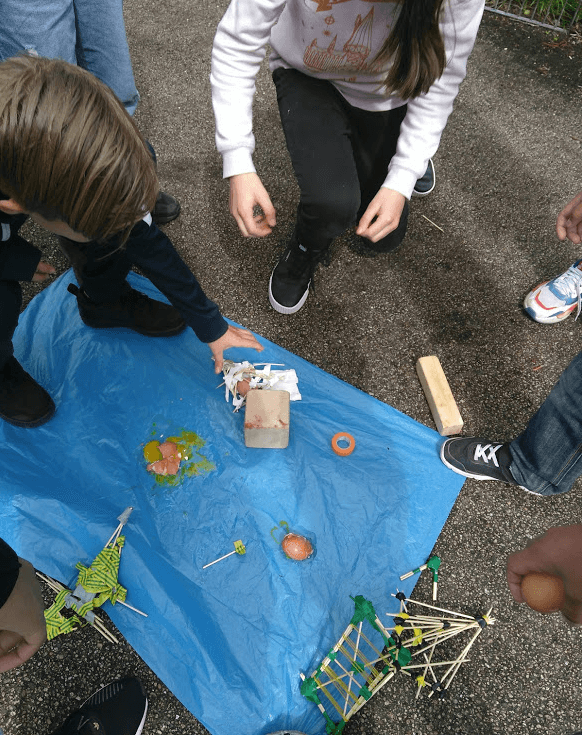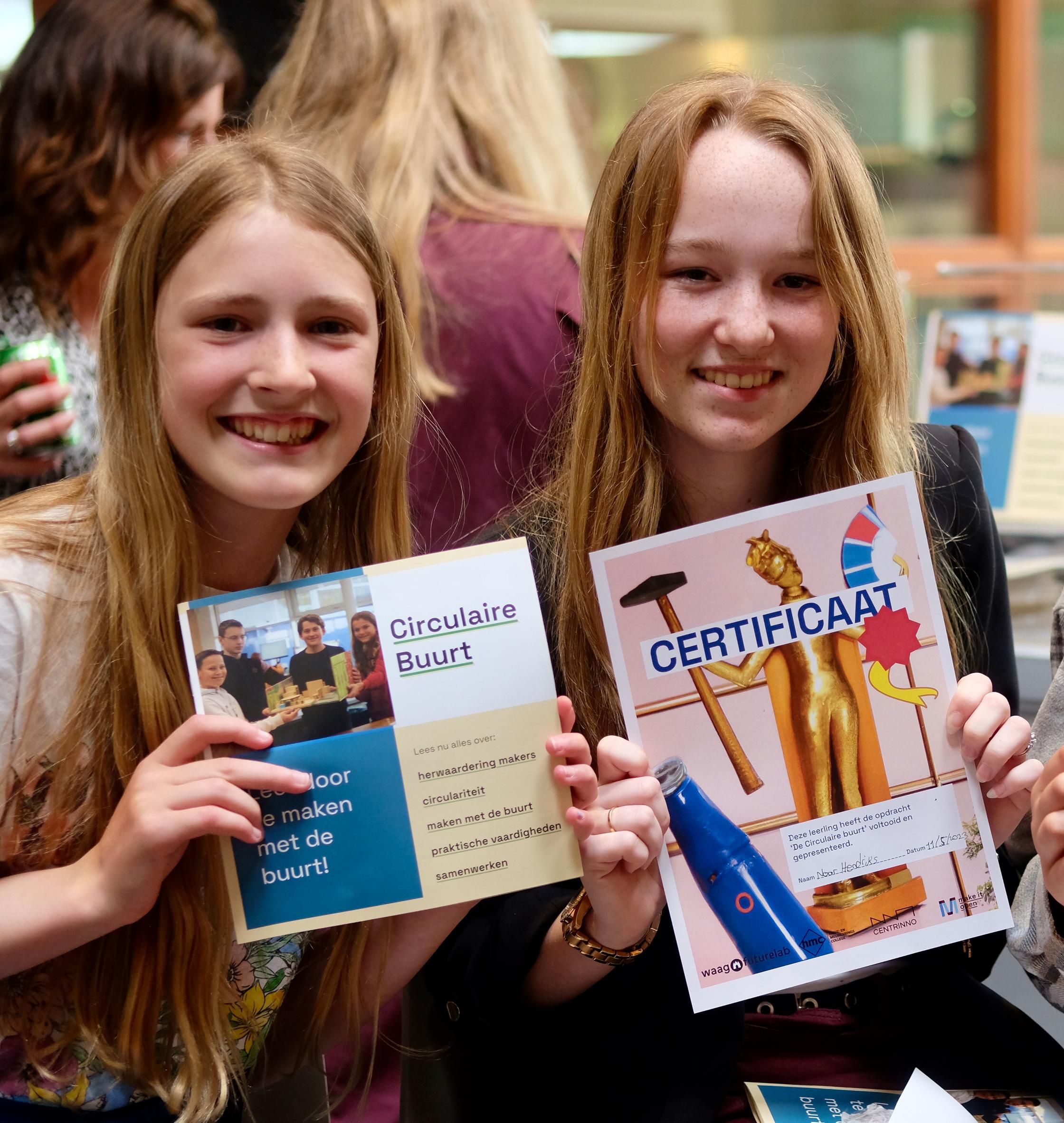In the European project Make it Open, Waag develops learning material for open schooling, in which inquiry-based, constructionism and design learning are central. As a pilot school, De Regenboog in Amsterdam carried out one of the learning programs in which students were instructed to make an 'egg protector' for bird nests. Teacher Suzanne van Lier shares in this blog the process of this ‘eggsperiment’.
'For many wild creatures, springtime is synonymous with new life. For birds, spring means building nests and laying eggs. However, bird nests and eggs are delicate and can be easily damaged. To keep these nests and eggs safe from harm, students from the Regenboog school in Amsterdam worked on building “egg protectors”. Their ultimate goal? To protect an egg against the force of a brick falling from a height of 50 centimetres.
Because bird nests are quite fragile, the protectors needed to be made from strong, yet lightweight materials. Therefore, for this exercise, each group had access to 25 skewers (extra strong), 50cm of adhesive tape, and 10 rubber bands.
We began by thinking backwards during a group brainstorming session. We asked ourselves questions like: What could go wrong with our protector? What could we do about those problems? We came up with a lot of potential complications. For instance, an egg could roll out of the protector, the protector might fall over, the rubber bands might be too tight or too loose, the egg might not fit, etc. Starting from what might go wrong often generates new design ideas and can help you decide how you’d like to proceed. Could you, for example, find a way to make the falling object change direction when it hits the protector so that it lands next to the egg?
Once we had asked enough questions and generated enough solutions, we got to work on our first designs. First, each child made a small sketch of his or her idea. After that, the children discussed and compared their ideas in groups. They asked questions like: How do you attach the skewers to each other? Which adhesive tape is best? Which shape is the strongest (e.g. triangles, lean-tos, cones, etc.)? What’s the best way to use rubber bands? How can we keep the egg inside the protector? There were plenty of things to talk about, ideas to try out, and adjustments to be made.
After the students constructed their protectors, it was finally time for the test! We didn’t want to subject our structures to the full force of a falling brick all at once, so we conducted our tests in three stages. We decided we would start out with a small piece of a brick, then try a wooden block and, finally, a real brick. Full of excitement and suspense, we spread out a large plastic bag, placed our egg protectors in the centre, and began our test.
We designed and tested three different models. The first design was a teepee-like structure, the second involved two connecting pyramids, and the third was made up of two roofs covering an elastic bed for the egg. All three of our designs survived phase one. In the second phase, however, two eggs were destroyed by the wooden block and the third egg sustained damage to its shell. Sadly, not one of the eggs survived the brick. Fortunately for the birds, flying bricks are a rarity in our neighbourhood!'


